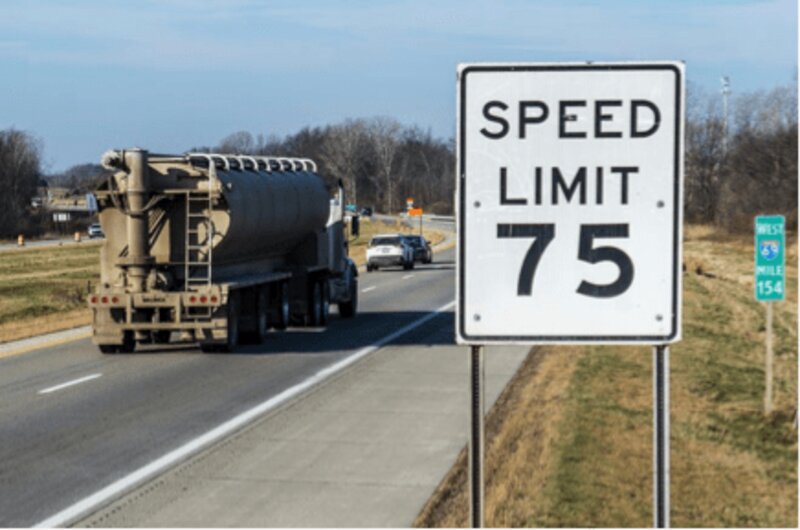
December 06, 2022
Study: Crashes, deaths increased after Michigan’s speed limit hikes to 75 mph
Crashes, deaths increased after Michigan's speed limit hikes to 75 mp

Photo Credit: Detroit Free Press
By Keith Matheny | Detroit Free Press | Published November 28. 2022
A 2017 Michigan law change that boosted speed limits to 75 mph on 600 miles of freeways caused an increase of more than 5% in overall accidents on those roads, including in fatal and serious-injury crashes, a new Michigan State University study found.
The finding puts data behind opponents’ contention that faster travel on rural highways desired by many motorists comes with a safety tradeoff. And because the speed hikes occurred on the highways with the safest conditions for them, any further speed limit increases in Michigan would likely lead to even larger spikes in crashes, fatalities and serious injuries, the researchers said.
In the study, published this month in the scientific journal Traffic Safety Research, Michigan State researchers reviewed Michigan State Police crash data for the highways where 75-mph speed limits were implemented in 2017, following the signing into law of Public Act 445 of 2016 by then-Gov. Rick Snyder. The changes occurred on 610 miles of less urban, limited-access freeway segments including:
- Interstate 75 in northern lower Michigan and the eastern Upper Peninsula.
- I-69 east of Flint.
- East-west U.S. 10 through mid-Michigan.
- North-south U.S. 127 through mid-Michigan.
- U.S. 131 running north-south through the western Lower Peninsula.
- A portion of U.S. 31 in Oceana and Mason counties.
The MSU researchers looked at crash data on those freeway segments both before the limits were changed, from 2014 to 2016, and afterward, in 2018 and 2019. The year 2017 was skipped because of the staggered implementation of the speed limit changes throughout that year.
Higher speed limits mean more crashes nationally
After controlling the data for other important variables, such as changes in traffic volumes, the researchers found that the 5-mph increase “resulted in persistent increases in traffic crashes across all levels of injury severity” of about 5%. In the control areas that didn’t see speed increases, crashes dropped nearly 2% over the same time period.
“Michigan is not unique at all on this — in comparisons across different states, all of the states that have gone to 75- or 80-mph (limits) have seen significant increases in fatalities, generally,” said Peter Savolainen, a professor and associate chair of graduate studies in MSU’s Department of Civil and Environmental Engineering and a coauthor of the study.
Steven Gursten, a Farmington Hills attorney and vocal opponent at the time of the 2016 bills that led to the speed limit changes, is not surprised by the researchers’ findings.
“It’s exactly what you would expect,” he said. “The old saying is that speed kills. The faster cars go, there will be more accidents and more serious accidents.”
The MSU researchers also looked at the speeds at which vehicles traveled after the limit changes, using data collected by the Michigan Department of Transportation and through “probe data” collected through GPS installed in commercial vehicles, passenger vehicles and from motorists’ cellphones.
“Consistent with what we’ve seen nationally, with that 5-mph increase we didn’t see a 5-mph increase in average speeds — it was in the neighborhood of 2 or 4 mph, typically,” Savolainen said. More motorists comply with the speed limit since it was raised to 75 mph, but the fastest-driving motorists “have a tendency to drive the speed limit plus-5, or the speed limit plus-7,” he said.
Share This Story, Choose Your Platform!
Marx Layne is your competitive advantage.
Your reputation and success are our only concerns.
